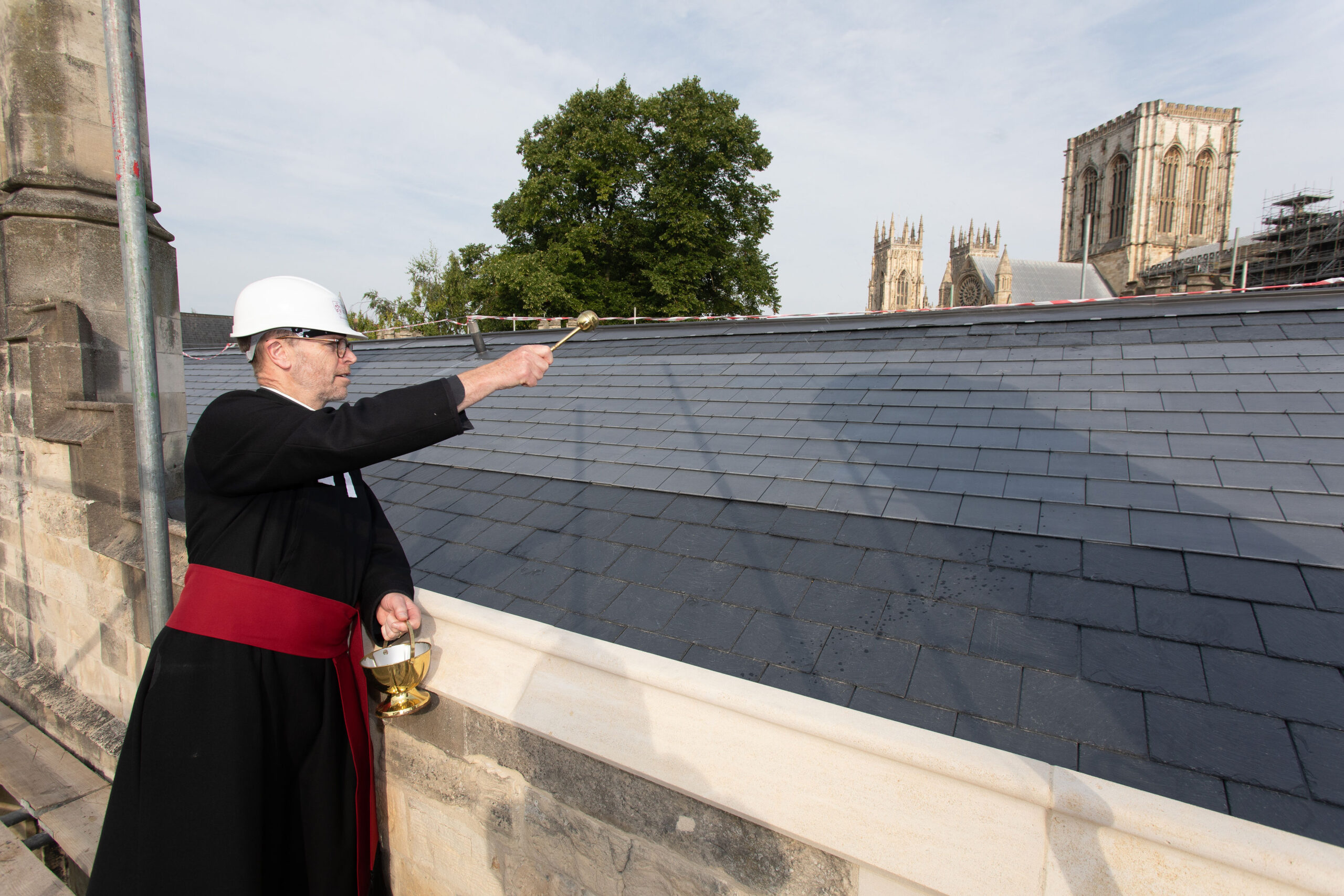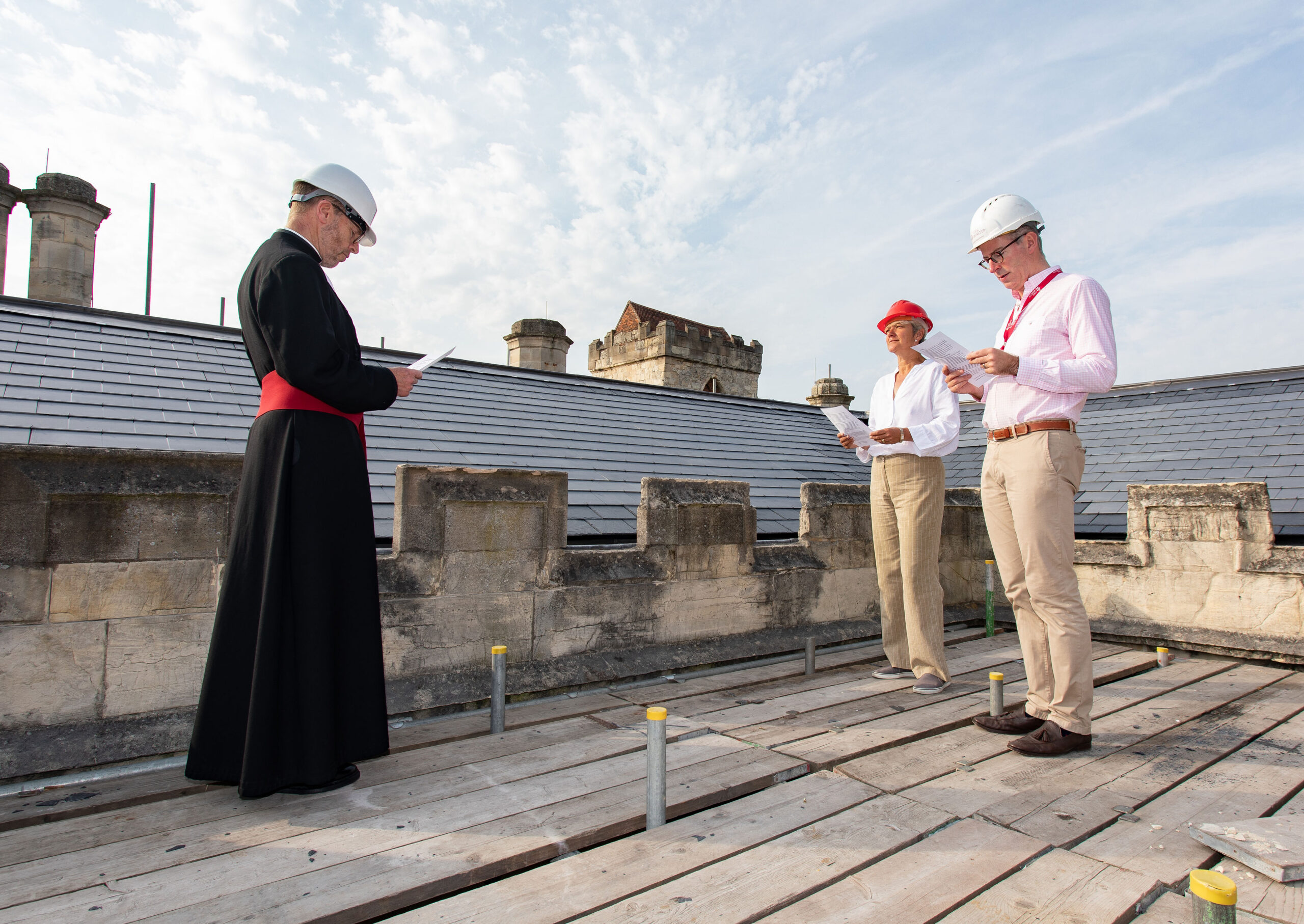Call for entries: The 14th Architizer A+Awards celebrates architecture's new era of craft. Apply for publication online and in print by submitting your projects before the Main Entry Deadline on December 12th!
Director of Works at York Minster, in northern England, five years ago, Alex McCallion presented a new development plan to future-proof the precinct’s 53 historic buildings, bringing them up to date in terms of environmental impact and sustainability.
With roots in the 7th Century, York Minster is among Europe’s largest Gothic churches and most magnificent cathedrals. Having taken centuries to complete, most of the architectural masterpiece we now see has stood since 1472, meaning even basic maintenance is subject to intense scrutiny to ensure the preservation of this invaluable heritage site.
Suffice it to say, then, installing 199 solar panels on the roof, new windows and an air source heat pump was always going to be a complicated process. But with help from the UK’s 2011 Localism Act — introduced to make it easier for community stakeholders to improve their area — years of consultation have now ended with a referendum victory approving the first stage of this landmark project.
“We have made it very clear our goal is to achieve net zero by 2030,” McCallion says of the York Minster Precinct. “This is both a goal of the City of York Council, and the Church of England. By next Christmas, we will be producing 40% of our own power on-site, so we’ll be well on our way to getting where we need to be.
“One of the early concerns was loading on the roof, and the structural integrity of the roof to carry the solar panels. Thankfully, it wasn’t actually a problem in the end because the roof of the Choir, where they will be installed, dates to 1838. It’s not Mediaeval [like other parts of the building]. The timbers are oak, strong as steel, and the roof is lead. But this created a secondary concern as a fire hazard. We are introducing state-of-the-art, energy generating technology, meaning there is a definite fire risk.”
To overcome this, McCallion and team have worked closely with North Yorkshire Fire and Rescue to develop a solution. This comes in the form of an advanced alarm system that uses inert gas to starve flames of oxygen as they light. Remarkably, it’s so finely balanced the technology still allows breathable air to sustain a human, should someone be conducting repairs at the time a blaze breaks out.

Blessing York Minster roof before solar panel installation begins, courtesy of York Minster
“All this is the first stage of our precinct Neighbourhood Plan, and there are two really important parts in this. First, putting the warm roof on with solar tiles installed, this generates the power we need for the air source pumps to heat the building. But more significantly, we needed consent to put double-glazed wooden sliding sash windows in. That’s the real game-changer in my opinion,” McCallion tells us.
“You cannot retrofit a heritage asset, of any kind, if you’re sticking with single-pane windows. So this is a really exciting leap forward. on the back of this we’re in conversations with the City of York Council to create a Heritage Partnership Agreement, which, if successful, will give me the equivalent of listed building consent to put wooden sliding slash windows all over our precinct properties. If that happens, we have a model for other planning authorities to follow,” he continues.

Praying on the cathedral roof before retrofitting begins, by York Minster
Nowhere is this idea of knowledge-sharing more evident than in York Minster’s new £9.1million Centre of Excellence, McCallion explains just before our conversation ends. A collaborative institution dedicated to helping other heritage sites understand how they might transform inefficient landmarks into green-tech enabled assets, it reflects the scale of the challenge now facing comparable estates.
“It’s not just England, this is a global issue. We’ve partnered with institutions around the world through the Centre of Excellence… Countries are dealing with wonderful assets but they haven’t got the skill set, so to be able to help them is amazing,” McCallion says. “Our latest partner is Christchurch Cathedral in New Zealand, they’re dealing with the same issue.
“Obviously, it’s not as old, but really it’s the same situation and it’s vital these works happen,” he continues, emphasising just how significant the York Minster’s retrofit is. “If we can get these consents in such a restricted heritage environment, I mean we are protected by almost every single planning law in England, then really everybody can be doing it.”
Lead image: York Minster at night by Grassrootsgroundswell
Call for entries: The 14th Architizer A+Awards celebrates architecture's new era of craft. Apply for publication online and in print by submitting your projects before the Main Entry Deadline on December 12th!





